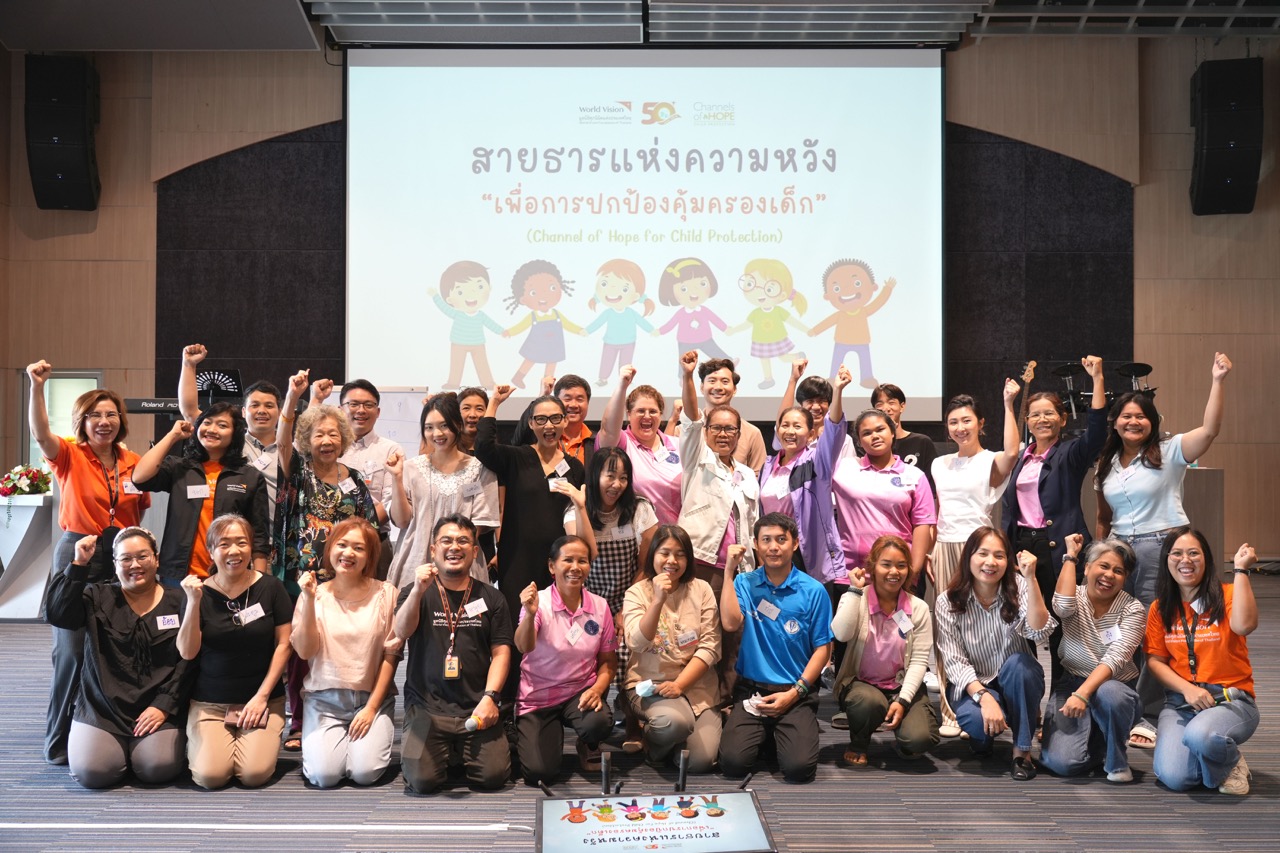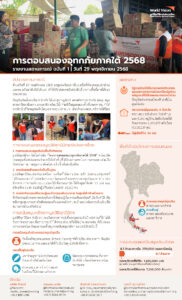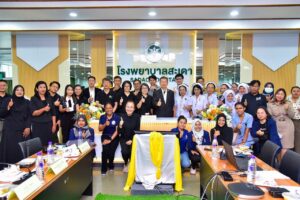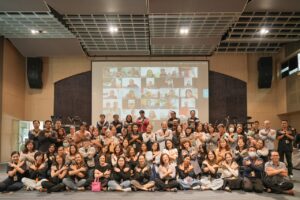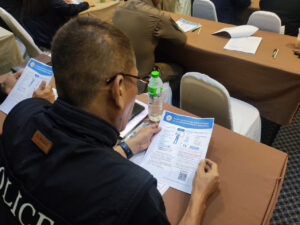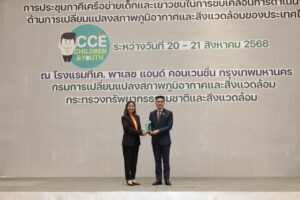In a society that appears to be constantly progressing, many children still face violence, rights violations, and suffering—often at the hands of those closest to them. A shocking reality is that in 2024, 2,776 children and youth in Thailand experienced violence, while around 700,000 were identified as vulnerable and in need of special protection. Alarmingly, 58% of parents and caregivers still use violence as a method of discipline. These are not just statistics—they represent the real-life stories of children living in risky situations, underscoring the urgent need to build a strong and effective child protection system.
“Channel of Hope” Curriculum: Empowering Church Leaders
Recognising the structural and deep-rooted nature of violence, World Vision Foundation of Thailand, a committed Christian organisation, has developed the “Channel of Hope” training curriculum. This initiative aims to create a safe environment for church leaders and members to learn and share experiences on issues related to child protection. The curriculum is designed around three key components: beginning with the heart, which focuses on raising awareness about child protection from a faith-based perspective; followed by the head, which provides knowledge and understanding of child protection issues; and finally the hand, which encourages practical action in churches and communities to address child protection challenges, ensuring the well-being of children and families.
Ms Pranee Kornpiboonphong, a Sunday school teacher at Ruamjai Church of Christ, spoke about the role of the Church, saying, “The Church must create a safe space and learn how to observe and provide appropriate support. We play a vital role in reaching out to and healing children, because when one child is cared for, it impacts the entire family and society as a whole.”
From the perspective of a younger participant, Joseph, a 17-year-old trainee, shared his thoughts about the Church: “I believe the Church is a second home—a safe place for children. It is where kids feel loved, understood by adults, and surrounded by friends who listen. What I gained from the training is that the Church and community development can go hand in hand, but it has to be done gradually, not forcefully. Many young people today did not grow up with religion, so we need to communicate in ways that are simple, relatable, and friendly.”
The curriculum not only provides information on children’s rights and relevant laws, but also invites participants to reflect on their own role as spiritual leaders, emphasising that love for Christ should be expressed through the care and protection of the most vulnerable in the community: children. This is especially vital in environments where violence against children is often hidden in subtle and hard-to-detect forms.
Practical Skill-Building to Respond to Real-Life Situations
The “Channel of Hope” training does not focus solely on theoretical knowledge; it also emphasises equipping church leaders with practical skills to respond meaningfully and effectively to situations involving violence against children. Participants learn how to identify behavioural signs that may indicate abuse, communicate safely with children, conduct initial assessments, and follow appropriate reporting procedures. The training also covers how to coordinate with both government and private agencies to ensure that support for children is effective, comprehensive, and continuous.
Spiritual Mission: Child Protection as the Role of the Church
Many church leaders have reflected that caring for children is not merely a social responsibility, but a true spiritual mission. Protecting children is a response to Christ’s love for the most vulnerable in society. The training inspires churches to see their role in child protection not as just another task, but as a sacred responsibility of being children’s “spiritual family” — one that embraces, nurtures, and fosters safety for every child, both within the church and in the surrounding community.
“I believe that faith and community development must go hand in hand. The Church should not remain confined within four walls—it must go out into the community, understand its problems, and respond to people’s needs, whether it be social issues, abuse, or human trafficking. We need knowledge and understanding so that we can truly bring God’s Word into people’s hearts,” said Mr Satit Suttancharoen, pastor of Baan Rao Church, with conviction.
He added, “I deeply value the work of World Vision Thailand in promoting parenting with love and understanding. While the Church focuses on spiritual matters, we can also serve as a bridge that connects God’s love to families through caring for children and the community…
I have had the opportunity to witness the transformation of a child raised by a single mother, who had no access to education. But when the Church stepped in to support him—through learning, love, and life essentials—that child grew up to become a church leader and led his family to know God. This is the fruit of deep and sincere ministry.”
He also reflected on the training, saying that we must truly understand what the community needs—not just bring what we think is good, but listen, understand, and respond to their real needs.
“I firmly believe that the future of collaboration between the Church and World Vision Thailand will be a powerful force in expanding God’s Kingdom, because we share the same goal: proclaiming the Good News and transforming lives.”
He concluded by saying, “Finally, I want to leave this message with all church leaders: the children of today are the leaders of tomorrow. If we do not prioritise them now, our churches will have no future. Let us work together to create a safe, loving environment where children can grow into strong leaders in the Lord.”
From this training, it is evident that many church leaders have begun to recognise their own power to be a voice for children in their communities. Many are committed to applying what they have learned in their own contexts, with a heartfelt determination to improve the lives of children. They are initiating mechanisms and activities that promote child protection at the community level. These changes may begin with just one church, one leader, or one conversation—but together, they form a “network of hope” that flows toward every child.

